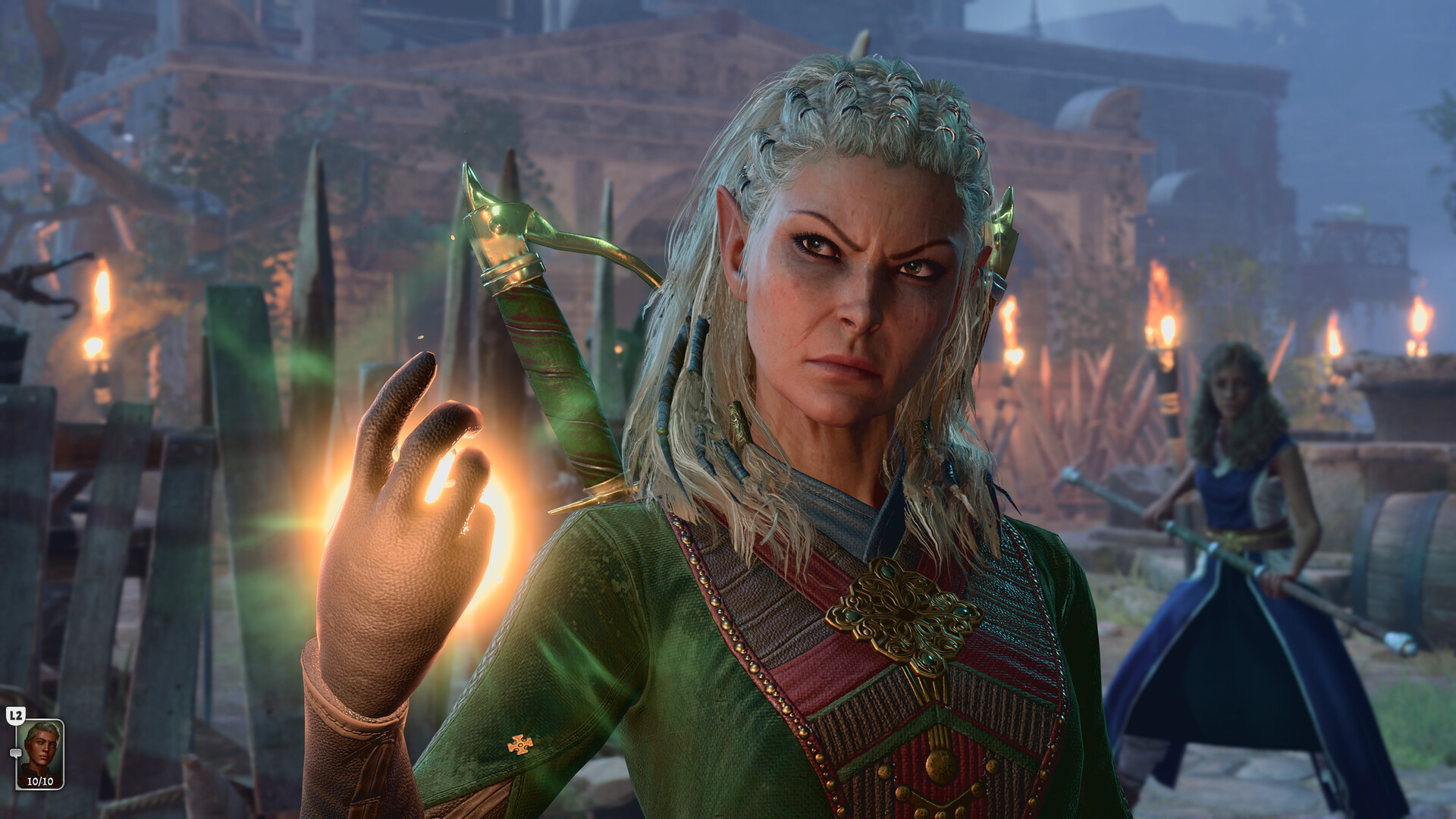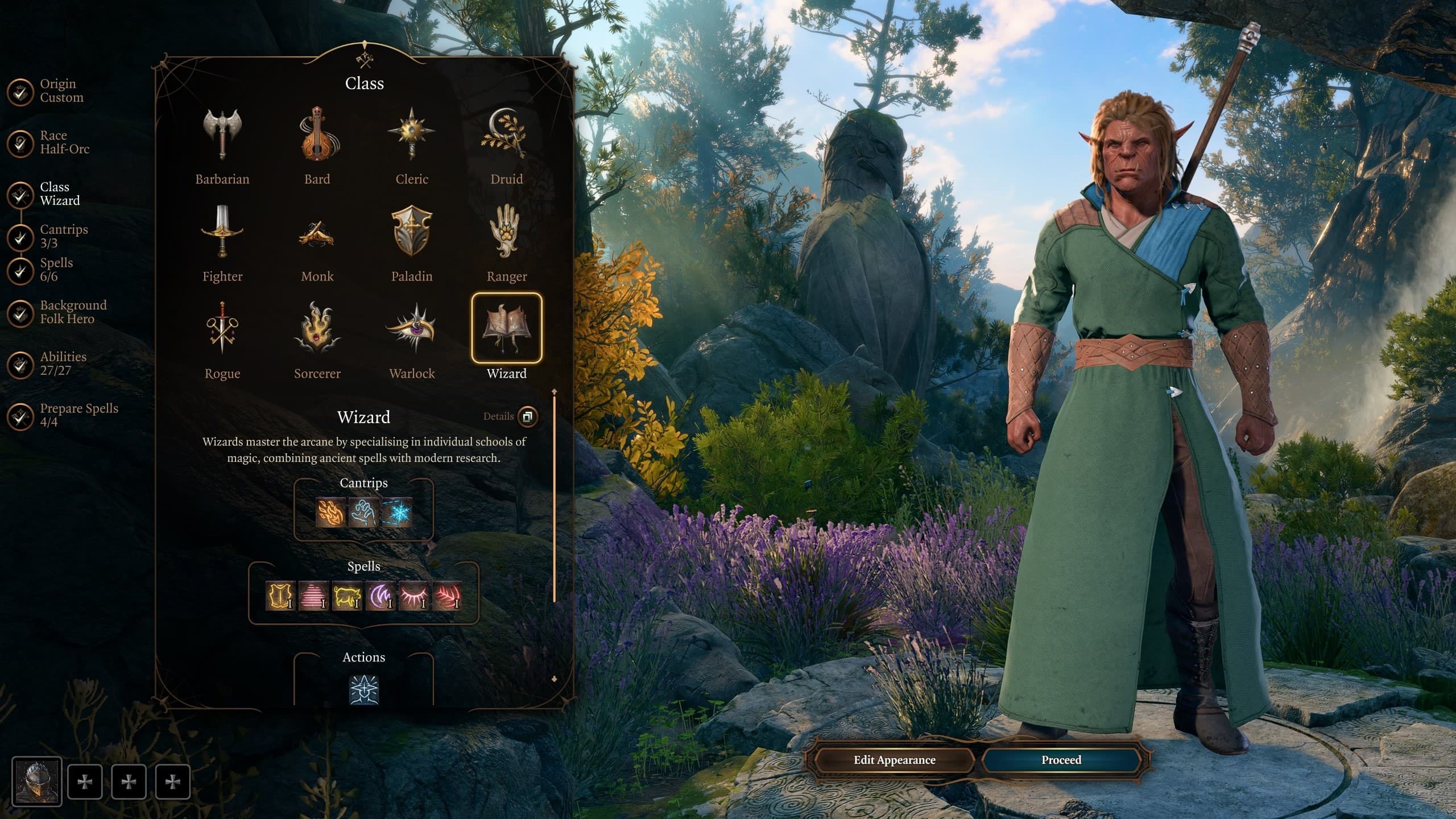Baldur's Gate 3: The best Wizard subclasses, ranked
There are eight different Wizard subclasses in BG3. Here are the ones we recommend.

Every class in Baldur's Gate 3 has several subclasses to choose from, but Wizards are unique in that they have eight of them, with each one centered around a different type of magic. The number of options here makes it hard to pick one, especially since the bonuses offered by several of the subclasses are quite substantial.
To help you choose, we've ranked each Wizard subclass from best to worst below. Additionally, we've also provided a detailed overview of each one so that you have a full understanding of the value that each one brings to the table. Something to keep in mind is that you can succeed no matter which subclass you use, so ultimately, play with what you think sounds the most fun.
The best Wizard subclasses in Baldur's Gate 3
Here's our rankings for all eight of the Wizard subclasses in Baldur's Gate 3, along with descriptions for each one.
Note that every subclass allows you to learn spells from scrolls of the corresponding school of magic for half the price once you reach Level 2.
1. Evocation School

- The best Baldur's Gate 3 classes
- Baldur's Gate 3 PC specs
- When will Baldur's Gate 3 come to Xbox?
Evocation spells represent the vast majority of your offensive attacks in battle, and are generally considered to be the best type of magic for Wizards, as well as the most straightforward. It makes sense, then, that Evocation School is the top subclass option. At Level 2, you get Sculpt Spells, which protects allies from your area-of-effect damage. It also provides Potent Cantrip at Level 6, which makes enemies take half-damage from one of your cantrips even if they roll a saving throw to avoid it. Additionally, you get Empowered Evocation at Level 10, which adds additional Intelligence rolls on top of your normal spell damage to make your magic hit harder.
If you're an Xbox player that's just starting out with the game now that it's finally available on Microsoft's console, this is definitely the subclass you should go with. You can experiment with the others later on once you have a greater understanding of Baldur's Gate 3's systems, but for now, we recommend sticking to the magic that's easiest to understand and also the best overall option.
2. Conjuration School
Whether you want to slow down enemies with crowd control, afflict them with status effects, create familiars, or reposition yourself, Conjuration spells come in handy often. The Conjuration School gives you the ability to cast down rainfall with Create Water at Level 2, which is useful whenever you're fighting fire-based enemies or in a fiery area. You can also use Teleport at Level 6 to quickly move to a location or switch places with an ally, and Level 10's Focused Conjuration ensures your Concentration on a Conjuration spell won't be broken if you take damage.
All the latest news, reviews, and guides for Windows and Xbox diehards.
3. Abjuration School
Abjuration spells are great for protecting yourself and your party members from damage and status effects. The Abjuration School subclass gives you a residual shield after you cast spells with Level 2's Arcane Ward, which is eventually strengthened at Level 10 by Improved Abjuration whenever you take a Short or Long Rest. At Level 6, you also gain the ability to give your Arcane Ward to an ally with Projected Ward.
4. Enchantment School
With Enchantment spells, you can empower your allies with valuable buffs or disrupt enemies with charms. At Enchantment School Level 2, you get access to Hypnotic Gaze, which you can use to stunlock a foe across multiple turns as long as you don't take damage. Instinctive Charm at Level 6 makes enemies attack a party member other than you, and Level 10's Split Enchantment allows you to target two targets instead of one with your Enchantment spells.
5. Necromancy School
Necromancy spells can be used to afflict your enemies with life-draining status effects, limit their healing, and even revive allies. At Level 2 of Necromancer School, you get Grim Harvest and can heal a small amount whenever you kill an enemy with a spell. Once you reach Level 6, you can summon minions from corpses with Animate Dead, and at Level 10 you also gain major resistance to Necrotic damage with Inured to Undeath.
6. Divination School
Divination magic is used to read thoughts and communicate with creatures similar to the way a Druid can naturally. This can be very useful at times, but overall, it's fairly niche. At Level 2 of the Divination School, you get Portent Dice that allow you to alter two Attack Rolls or Saving Throws each day with the value of your Portent Dice, provided you've Long Rested. You get a third die at Level 6 and regain used Portent Dice when you Short Rest thanks to Expert Divination, and at Level 10 you get access to both Darksight (improved vision in dark areas) and Third Eye (the ability to see invisible creatures).
7. Illusion School
Illusion spells enable you to disguise yourself, debuff incoming attacks, distract foes with illusions, and even turn creatures invisible. Unfortunately, the bonuses from the Illusion School subclass are fairly mediocre. There's Improved Minor Illusion at Level 2 that allows you to cast the spell when you're Silenced and as a Bonus Action, See Invisibility at Level 6 that allows you to spot cloaked enemies, and Level 10's Illusory Self, which creates a phantom image of yourself you can force an enemy to "whiff" on once between Short or Long Rests.
8. Transmutation School
Transmutation magic is used to turn objects into useful items or to transform allies, enemies, or yourself. It's far from the most useful type of spell, though, and its subclass isn't very impressive either. At Level 2, Experimental Alchemy will allow you to brew two potions instead of one if you pass a 15 Medicine check. Level 6's Transmuter's Stone allows you to give an ally a small rock that provides benefits of your choosing, and at Level 10 you can turn a target into a Bluejay capable of flight. They will remain as a Bluejay for five turns, or until the bird's hitpoints drop to zero.
Which type of magic will you master?
All eight Wizard subclasses have their place in Baldur's Gate 3, and even the weakest of them shine brightly at some points and can be used to complete your adventure. With that said, you'll probably want to use one of the better ones for the best chance of success, especially if you're playing on a harder difficulty.
The Evocation, Conjuration, and Abjuration School subclasses are what you'll find the most success with, as the benefits they provide are extremely powerful and the types of magic they're for are generally considered to be the best. Enchantment and Necromancy subclasses can be quite strong at times, too, especially if you coordinate your party around being able to take advantage of things like Hypnotic Gaze or the healing interruptions that Necromancy provides.
Baldur's Gate 3 is available now on Xbox Series X|S, PC, and PS5. It stands tall as one of the best Xbox games and best PC games of 2023, and is a must-play for fans of fantasy RPGs and the D&D universe.
Baldur's Gate 3 | See at GOG
Enter the Forgotten Realms while playing as a customized character of your own choosing. The decisions you make determine what you encounter as you discover more and more about the stories and world around you.
Also at: Xbox

Brendan Lowry is a Windows Central writer and Oakland University graduate with a burning passion for video games, of which he's been an avid fan since childhood. He's been writing for Team WC since the summer of 2017, and you'll find him doing news, editorials, reviews, and general coverage on everything gaming, Xbox, and Windows PC. His favorite game of all time is probably NieR: Automata, though Elden Ring, Fallout: New Vegas, and Team Fortress 2 are in the running, too. When he's not writing or gaming, there's a good chance he's either watching an interesting new movie or TV show or actually going outside for once. Follow him on X (Twitter).



